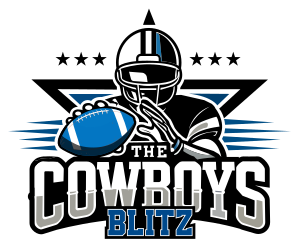YosemiteSam
Unfriendly and Aloof!
- Messages
- 45,858
- Reaction score
- 22,195

Building Internet Infrastructure is what I do for a living, so I always find these peek inside articles interesting. I figured there are a few others here at CZ that would find it interesting too.
============================================
The Facebook Data Center FAQ
With more than 500 million active users, Facebook is the busiest site on the Internet and has built an extensive infrastructure to support this rapid growth. The social networking site was launched in February 2004, initially out of Facebook founder Mark Zuckerberg’s dorm room at Harvard University and using a single server. The company’s web servers and storage units are now housed in data centers around the country.
Each data center houses thousands of computer servers, which are networked together and linked to the outside world through fiber optic cables. Every time you share information on Facebook, the servers in these data centers receive the information and distribute it to your network of friends.
We’ve written a lot about Facebook’s infrastructure, and have compiled this information into a series of Frequently Asked Questions. Here’s the Facebook Data Center FAQ (or “Everything You Ever Wanted to Know About Facebook’s Data Centers”).
How Big is Facebook’s Internet Infrastructure?
Facebook is currently the world’s most popular web site, with more than 690 billion page views each month, according to metrics from Google’s DoubleClick service. Facebook currently accounts for about 9.5 percent of all Internet traffic, slightly more than Google, according to HitWise.
Facebook requires massive storage infrastructure to house its enormous stockpile of photos, which grows steadily as users add 100 million new photos every day. People share more than 30 billion pieces of content on Facebook each month. In addition, the company’s infrastructure must support platform services for more than 1 million web sites and 550,000 applications using the Facebook Connect platform.
To support that huge activity, Facebook operates at least nine data centers on both coasts of the United States, and is in the process of building its first company-built data center in Oregon. Although more than 70 percent of Facebook’s audience is in other countries, none of the company’s data centers are located outside the United States.
For most of its history, Facebook has managed its infrastructure by leasing “wholesale” data center space from third-party landlords. Wholesale providers build the data center, including the raised-floor technical space and the power and cooling infrastructure, and then lease the completed facility. In the wholesale model, users can occupy their data center space in about five months, rather than the 12 months needed to build a major data center. This has allowed Facebook to scale rapidly to keep pace with the growth of its audience.
In January 2010 Facebook announced plans to build its own data centers, beginning with a facility in Prineville, Oregon. This typically requires a larger up-front investment in construction and equipment, but allows greater customization of power and cooling infrastructure.
Complete Story
============================================
The Facebook Data Center FAQ
With more than 500 million active users, Facebook is the busiest site on the Internet and has built an extensive infrastructure to support this rapid growth. The social networking site was launched in February 2004, initially out of Facebook founder Mark Zuckerberg’s dorm room at Harvard University and using a single server. The company’s web servers and storage units are now housed in data centers around the country.
Each data center houses thousands of computer servers, which are networked together and linked to the outside world through fiber optic cables. Every time you share information on Facebook, the servers in these data centers receive the information and distribute it to your network of friends.
We’ve written a lot about Facebook’s infrastructure, and have compiled this information into a series of Frequently Asked Questions. Here’s the Facebook Data Center FAQ (or “Everything You Ever Wanted to Know About Facebook’s Data Centers”).
How Big is Facebook’s Internet Infrastructure?
Facebook is currently the world’s most popular web site, with more than 690 billion page views each month, according to metrics from Google’s DoubleClick service. Facebook currently accounts for about 9.5 percent of all Internet traffic, slightly more than Google, according to HitWise.
Facebook requires massive storage infrastructure to house its enormous stockpile of photos, which grows steadily as users add 100 million new photos every day. People share more than 30 billion pieces of content on Facebook each month. In addition, the company’s infrastructure must support platform services for more than 1 million web sites and 550,000 applications using the Facebook Connect platform.
To support that huge activity, Facebook operates at least nine data centers on both coasts of the United States, and is in the process of building its first company-built data center in Oregon. Although more than 70 percent of Facebook’s audience is in other countries, none of the company’s data centers are located outside the United States.
For most of its history, Facebook has managed its infrastructure by leasing “wholesale” data center space from third-party landlords. Wholesale providers build the data center, including the raised-floor technical space and the power and cooling infrastructure, and then lease the completed facility. In the wholesale model, users can occupy their data center space in about five months, rather than the 12 months needed to build a major data center. This has allowed Facebook to scale rapidly to keep pace with the growth of its audience.
In January 2010 Facebook announced plans to build its own data centers, beginning with a facility in Prineville, Oregon. This typically requires a larger up-front investment in construction and equipment, but allows greater customization of power and cooling infrastructure.
Complete Story

